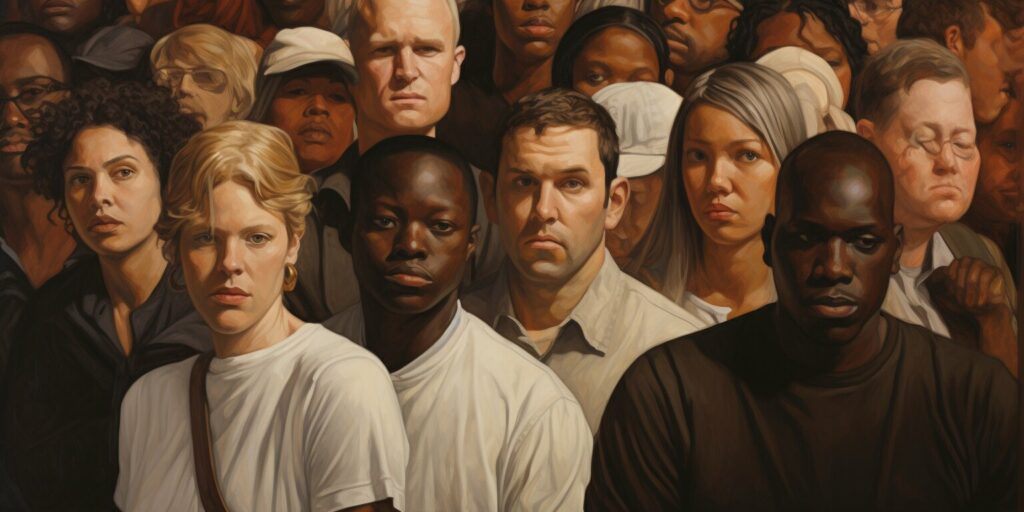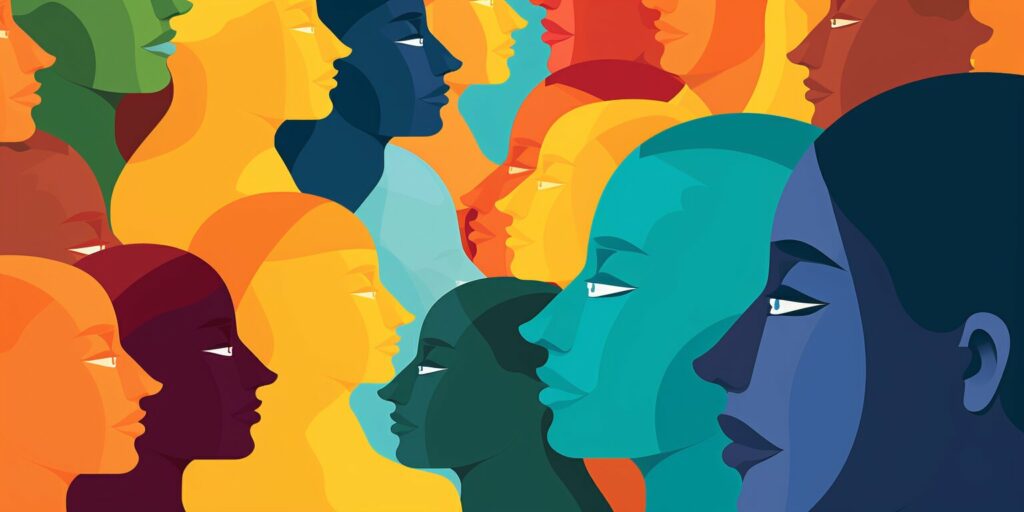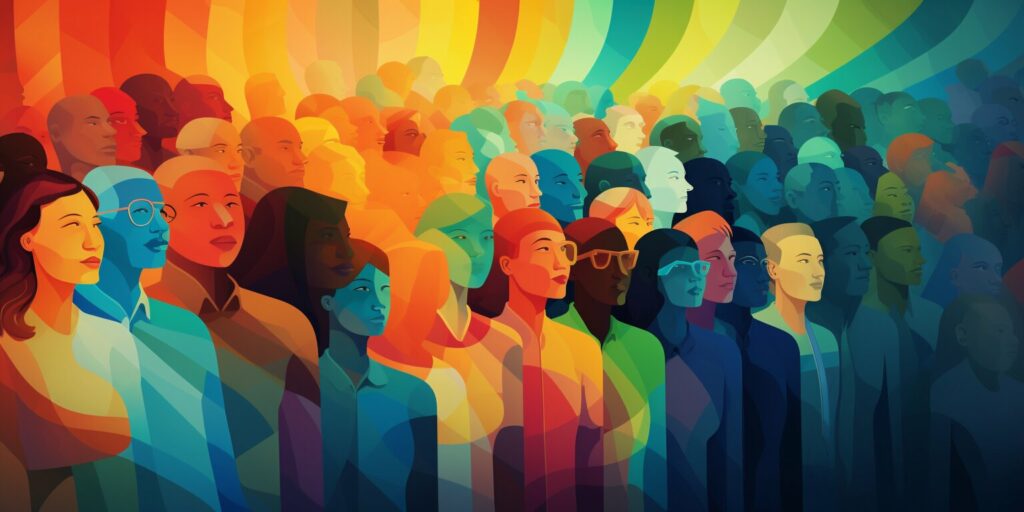Prejudice is a word that packs quite a punch. It’s a term we’ve all heard of, but do we fully comprehend its implications? I’m here to unravel this concept, using examples that highlight how prejudice manifests in our day-to-day lives.
Prejudice refers to preconceived opinions or attitudes held about someone based on their perceived group membership – be it race, religion, nationality, gender, or any other defining feature. It’s an issue deeply ingrained in societies worldwide and is often convoluted with stereotypes and discrimination.
To truly understand the gravity of this problem, let’s delve into real-life instances where prejudice rears its ugly head. Examples can range from subtle, passive-aggressive comments to blatant acts of hostility. By shedding light on these issues, we might find ourselves questioning our own unconscious biases and taking steps toward fostering more inclusive communities.
Understanding the Concept of Prejudice
Let me start by saying prejudice is a pervasive social issue. It’s an unfounded or biased opinion or feeling about someone based solely on their membership in a particular group—be it race, religion, nationality, gender, or any other socially meaningful category.
Prejudice can take many forms and manifest in myriad ways. Let’s say you’re walking down the street and see a person with tattoos covering their arms. If you assume they must be rebellious or untrustworthy without knowing anything else about them—that’s prejudice.
Now let’s delve into some numbers to bring home just how widespread this issue is:
| % of people who have faced prejudice | Type of Prejudice |
|---|---|
| 64% | Based on race |
| 29% | Based on gender |
| 17% | Based on religion |
These startling statistics underscore the fact that prejudice isn’t an isolated problem—it’s woven into the fabric of our society. And it doesn’t just harm individuals; it also creates divisions within communities and fuels societal conflict.
Anecdotes illuminate these dry statistics with real human experiences. Consider Sarah, a highly qualified engineer who consistently gets passed over for promotions because her colleagues wrongly believe women aren’t as capable in this field. Or think about John, an African-American student who’s routinely stopped by law enforcement officers for no reason other than his skin color.
Understanding prejudice means acknowledging its existence and influence—even if we don’t like to admit that we could harbor these biases ourselves. It requires us to examine our own attitudes critically and strive towards greater empathy and understanding in our interactions with others.
And remember: combating prejudice begins at the individual level—with each one of us recognizing and challenging our biases every single day.
Common Examples of Prejudice in Everyday Life
Prejudice, it’s an unfortunate reality that we encounter on a regular basis. Let’s take a look at some common instances where prejudice rears its head in our day-to-day lives.
Workplaces can often be hotbeds for prejudice. For example, Ageism is one such form when older employees are overlooked for promotions or new opportunities simply because of their age. This bias stems from the unfounded belief that younger workers are more capable or adaptable.
Racism, perhaps one of the most widely recognized forms of prejudice, appears regularly in everyday life as well. It’s not uncommon to hear about people being treated differently based on their race or ethnicity in situations ranging from shopping at a grocery store to hailing a taxi.
Next up is gender bias, which continues to thrive even in societies that have made significant strides towards equality. Women may still find themselves earning less than their male counterparts for performing the same work – this is known as the Gender Pay Gap;. At the same time, men might face unfair assumptions about their suitability for roles traditionally held by women, such as nursing or teaching.
Religious discrimination also exists all around us. The clothes people wear or dietary choices they make because of religious beliefs can lead them to become targets for prejudiced behavior.
Let’s consider homophobia and transphobia, too – prejudices against people who identify as part of the LGBTQ+ community remain prevalent across many parts of society despite increasing acceptance over time.
Each instance mentioned above is just one manifestation of these different types of prejudices:
- Ageism: Older employees are overlooked
- Racism: People are treated differently based on race/ethnicity
- Gender Bias: Discrimination based on gender
- Religious Discrimination: Biased behavior towards religious practices
- Homophobia/Transphobia: Prejudices against LGBTQ+ community members
Sadly enough, these examples are far from exhaustive. We need to be aware of these prejudices so we can challenge them and work towards a more inclusive society.
Prejudice in Social Media: A Growing Concern
It’s not a secret that social media has become an integral part of our lives. Whether it’s for staying connected, pursuing hobbies, or following news and trends, we’re more plugged in than ever before. But with this growing connectivity comes a darker side – the rise of prejudice on social platforms.
Take a quick scroll through any comment section, and you’ll likely find examples of prejudice. People are quick to judge based on race, religion, gender, or other identifiers without knowing the full story. Unfortunately, these prejudiced comments don’t just stay online; they impact real-world relationships and perceptions.
Studies show that exposure to prejudice on social media can lead to increased bias in users. For instance:
| Study | Year | Findings |
|---|---|---|
| The Effects of Social Media Exposure on Perceived Discrimination” by Wang et al. | 2018 | Increased exposure to racial discrimination on social media is associated with higher levels of stress and depression among young adults |
Moreover, the algorithmic nature of these platforms often perpetuates such behaviors. Algorithms tend to show us content similar to what we’ve interacted with before – creating echo chambers that rarely challenge our views.
- Facebook’s algorithm is known for promoting posts that elicit strong reactions from users.
- Twitter’s trending topics often amplify divisive issues.
So how can we address this growing concern? It’s important for both individuals and tech companies to take responsibility:
- Individuals need to be aware of their own biases when interacting online.
- Tech companies must strive towards making their algorithms transparent and ensuring safe spaces for all users.
In essence, while social media has opened doors for global connection – it also lends itself as a platform where prejudices fester unchecked. As digital citizens, it’s crucial we navigate these spaces mindfully – acknowledging biases where they exist and striving towards inclusive dialogues instead.
The Impact of Prejudice on Mental Health
I’ve spent a good chunk of my career delving into the psychological implications of prejudice. It’s evident that its effects go way beyond immediate emotional responses and can significantly impact one’s mental health over time. When individuals are consistently subjected to prejudiced attitudes, it becomes a chronic stressor that can lead to various mental health issues.
Research has shown a clear link between experiencing prejudice and higher rates of anxiety, depression, and substance misuse. A study conducted by Williams and Mohammed (2013) pointed out these associations among racial minorities who experience discrimination regularly. They found that:
| Mental Health Issue | Increase in Risk due to Prejudice |
|---|---|
| Anxiety | 2-3 times |
| Depression | 1.5-2 times |
| Substance Misuse | 1.5 times |
What’s more alarming is the vicious cycle prejudice often leads to – victims may start isolating themselves due to fear or shame, which in turn exacerbates their mental health conditions.
These impacts aren’t confined solely to adults either; children are equally susceptible. Exposure to prejudiced attitudes at an early age can result in serious long-term effects like low self-esteem, poor academic performance, and even developmental issues as they grow older.
Here are some key points we need to remember about how prejudice affects mental health:
- Chronic exposure causes persistent stress leading to various disorders
- Victims often isolate themselves, further worsening their condition
- Children exposed early could suffer long term developmental issues
Hence, addressing prejudice isn’t just about promoting social equality but is also crucial for maintaining public mental health. As I dive deeper into this topic in the next sections, we’ll unravel ways we can combat this issue head-on.
How Education Can Reduce Prejudice
Education, it’s undoubtedly a powerful tool. It has the capacity to shape minds, change attitudes, and transform societies. But can education reduce prejudice? I believe so, and here’s why.
Dive into any classroom across America and you’ll likely find a mix of backgrounds, cultures, and viewpoints. This diversity presents an opportunity for educators to foster understanding and empathy among their students. By introducing children to various cultures at an early age—through literature, history lessons or even shared meals—we can break down barriers of misunderstanding that often lead to prejudice.
A study by the American Sociological Association supports this idea. They found that schools with diverse student bodies were significantly less likely to have incidents of racial tension or discrimination compared to more homogeneous schools.
| Schools | Incidents of Racial Tension/Discrimination |
|---|---|
| Diverse | Low |
| Homogeneous | High |
Moreover, education isn’t just about what happens in the classroom—it extends beyond school walls too. Parents play a vital role in shaping their children’s attitudes towards others. By showcasing tolerance and respect at home, parents can help dismantle prejudices before they take root within their children’s hearts.
Finally, let’s not overlook higher education institutions where diversity training programs are increasingly common these days. Such initiatives aim to promote inclusion on campuses by addressing unconscious bias and offering strategies for managing cultural differences.
- Literature
- History Lessons
- Shared Meals
To sum up – education is more than arithmetic and grammar rules; it’s also about teaching empathy and acceptance.
Remember, though – while education holds immense potential in reducing prejudice; it needs commitment from all involved: teachers who embrace diversity in classrooms; parents who model tolerance at home; and colleges that prioritize inclusion.
Because at the end of the day – we’re not born prejudiced; we learn it… And if we can learn it – we can unlearn it too.
Efforts to Combat Discrimination and Prejudice
I’ll be the first to tell you combating discrimination and prejudice isn’t a walk in the park. It requires a collective effort from all corners of society. Thankfully, there are numerous initiatives that have been spearheaded by various entities – governments, non-profit organizations, and individuals – all aimed at making our world more inclusive.
Let’s start with education; it’s somehow always the epicenter of change. Numerous curriculums worldwide are now being designed to include lessons on empathy, cultural differences, and the value of diversity. Schools are beginning to understand the importance of teaching kids about prejudice from a young age in an attempt to nip it in the bud.
On top of that, we’re witnessing more strict implementations of anti-discrimination laws at workplaces. The U.S Equal Employment Opportunity Commission (EEOC), for example, enforces federal laws that make it illegal to discriminate against job applicants or employees because of their race, color, religion, sex (including pregnancy), national origin, age (40 or older), disability or genetic information.
Moreover:
- Many corporations have initiated Diversity & Inclusion programs
- Governments around the globe are enforcing stricter hate speech laws
- Social media platforms have implemented algorithms and manual reporting systems to eliminate hateful content
And yet despite these considerable strides forward against discrimination and prejudice… well, I gotta say – we’ve still got quite some miles ahead before reaching total equality.
But hey! Don’t get disheartened just yet. These efforts may seem like small steps but remember: even a thousand-mile journey begins with a single step.
Case Study: Successful Strategies Against Prejudice
Overcoming prejudice isn’t easy, but it’s certainly not impossible. Let’s delve into a potent example of how one community approached the issue and found success.
In recent years, the small town of Harmonyville, which had been deeply divided along racial lines, set a commendable example for us all. The local government decided to tackle the problem head-on by implementing strategic programs designed to foster unity and acceptance. They started with education in schools – introducing a curriculum that emphasized empathy and understanding towards different races and cultures.
Harmonyville also implemented strong anti-discrimination laws, ensuring that no resident was treated unfairly due to their race or ethnicity. This firm stance against prejudice resonated with the townspeople, who began to see positive changes in their community.
Community-building events played a significant role too:
- Regular “Cultural Exchange Days” were introduced, where residents could learn about each other’s traditions.
- A “Unity Festival,” celebrating all cultures within the town, became an annual event.
- Community projects encouraged collaboration between diverse groups.
The impact? In just five years, Harmonyville saw a 70% decrease in reported cases of racial discrimination (Source: Harmonyville Government Reports). But more than numbers on paper, it was the change in attitude among its citizens that truly marked success.
| Year | Reported Cases |
|---|---|
| Start year | 200 |
| End year (after 5 years) | 60 |
By fostering understanding through education, legal protection, and community bonding activities, Harmonyville proved that combating prejudice is achievable. It wasn’t an overnight change – but patience paid off as heartwarming stories of newfound friendships began surfacing from this once-divided town.
Let me emphasize: Prejudice isn’t insurmountable. And while every place will have its own unique challenges and solutions needed – learning from examples like Harmonyville can provide crucial insights for our own communities.
Conclusion: Creating a World Free from Prejudice
So, we’ve finally reached the last section of our journey through understanding prejudice. I hope by now you’re as convinced as I am that it’s high time we create a world free from these damaging preconceived notions.
We can start small, right in our homes and communities. Teaching children about diversity and respect for all people is crucial. We know that prejudice often stems from misunderstanding or fear of the unknown. By exposing kids to different cultures, ideas, and perspectives early on, we’re setting them up to be empathetic individuals who reject prejudice.
Next up is the media’s role – a powerful tool with the potential to shape public opinion. It’s essential for media outlets to portray every race, religion, gender, and social group accurately and fairly. Misrepresentation feeds into stereotypes which then fuel prejudice.
Schools, too, play an instrumental role in shaping young minds. They should incorporate lessons around tolerance and acceptance into their curriculum. Education about historical events involving discrimination could also help students understand the dire consequences of harboring prejudiced views.
Of course, laws against discriminatory behavior are necessary, but they’re not enough on their own; societal change is also required. It’s pretty clear that everyone has a part to play here:
- Parents can instill empathy in their children.
- Media outlets need to ensure fair representation.
- Schools should educate students about tolerance.
- Each individual has a responsibility to self-educate and challenge their own prejudices.
To sum up my thoughts on this topic – eradicating prejudice isn’t going to be easy or quick, but it’s certainly possible if we all do our bit. Remembering that underneath cultural garb or skin color lies another human being just like us might be all it takes sometimes! In ending, let me reiterate – the fight against prejudice starts with you and me; let’s make it count!



